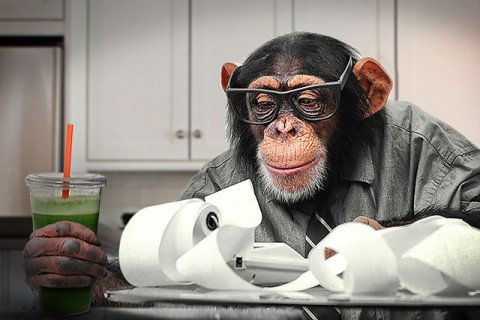I was reticent to post on this topic, if only because Doc's shtick is far...far more fun than math formulas and how they're obtained.
Doc has, however, been fishing for alternative content - I think we exhaust him by making him do most of the talking!
Ultimately, I decided to post on HQ's MLEs because the way the system works is actually interesting (to an egghead...OK...I'm being liberal with the word interesting, but cut a math geek some slack :D )
An MLE (Major League Equivalency) is an attempt to project a player's likely MLB statistics would look like if you transitioned him to the big leagues without any changes in his current skill set or established level of performance.
Back in the early 2000s when MLEs were being popularized by Baseball Prospectus, the state of the art was to take the player's batting line, as a whole, and correlate it with what batting lines for similar players or for players who made the transition mid-season, looked like in the big leagues. So you'd take your AAA stat-line (back then it was as simple as BA/OPS with a park adjustment, usually), and you'd run a simple one-way correlation or get a composite pair study together or calculate player similarity scores and project based on what similar players did and that was your answer.
It was innovative work at the time, and I am not taking anything away from the pioneers, but we know a lot more about how players tend to perform when they change leagues and about which types of statistical profiles are the most likely to translate. For example, minor leaguers with poor K/BB ratios, very high K rates (>23% of plate appearances), or low batting averages on balls in play tend to struggle. Now that we know these things, it's easier for us to spot Dallas McPherson and Brandon Wood Mike Olt coming (and failing) before they arrive and ruin our day.
But that knowledge tends to come at you in pieces...we have thumb rules about things like minor league BB rates vs. minor league power (hint: if they walk a ton in the minors and have an ISO < .120 or so...they won't walk in the big leagues because they will be pitched to very aggressively), or GB/FB or usable speed from SB% and 3B/(2B+3B). Each rule is handy, but it's hard to see how they all come together.
As I understand what HQ does - they blend all of that together by running multiple regression analysis on a set of component skills. You hear Doc quote many of them when he reads from his HQ guide each spring. PX, SX, CT%, pull%, Eye, BABIP (hard hit rate now, since we have that data). They account for which minor the available statistics that influence each component skill and the covariance between components.
So...for each component stat, we get an expected performance (in that component), and from there, they make a projection to theoretical MLB statistics (by correlating the components to the statistical outcome they produce on average).
It ain't your daddy's MLE.
I posted a few MLEs for Mariner prospects of interest yesterday - a short summary:
- Maniger: .273/.345/.484 (this does assume a neutral home ballpark)
- Gamel: .286/.341/.390
- Vogelbach: .246/.349/.411 (more on this in a moment)
- Zunino: .236/.300/.414
- Heredia: .258/.334/.331
- Motter: .187/.241/.318 (YIKES!)
- Freeman: .238/.293/.311
- Peterson: .226/.274/.383
- Smith: .220/..249/.291 (um...ew)
- Law: .270/.338/.353
- Landry: ,197/.248/.293
- Littlewood: .245/.335/.332 (little wood indeed...no pop here)
- Lopes: .278/.331/.336
- Miller: .232/.292/.274
- O'Neill: .284/.359/.487 (wow...color me stunned, given his atrocious K rate)
- Pizzano: .203/.253/.290
- Powell: .232/.281/.301
- Romero: .235/.278/.401
- Shank: .249/.297/.319
So..........
Three things jump out at me.
1) Maniger :)
2) O'Neill is somehow getting credit for enough things that he does well to offset the horrendous K rate...wonder what went into those formulas that benefited him...hard-hit rate, flyball rate?
3) Vogelbach may not be the juicy find we hope.
I can tell you, based on the actual batting line he posted last year, why Vogelbach has such a low BA and ISO. Way...way too many grounders. Doc is right that his swing produces too many fliners and grounders...that was statistically the case in 2016. It is possible to run a .33x BABIP in the minors as Vogelbach has consistently done while hitting a blizzard of grounders (they don't shift in the minors very much), but it is not possible to even hit .290 on balls in play if they're mostly grounders in the big leagues.
Something to keep an eye on.
Also...our vaunted amazing depth doesn't look very amazing...just FWIW.
